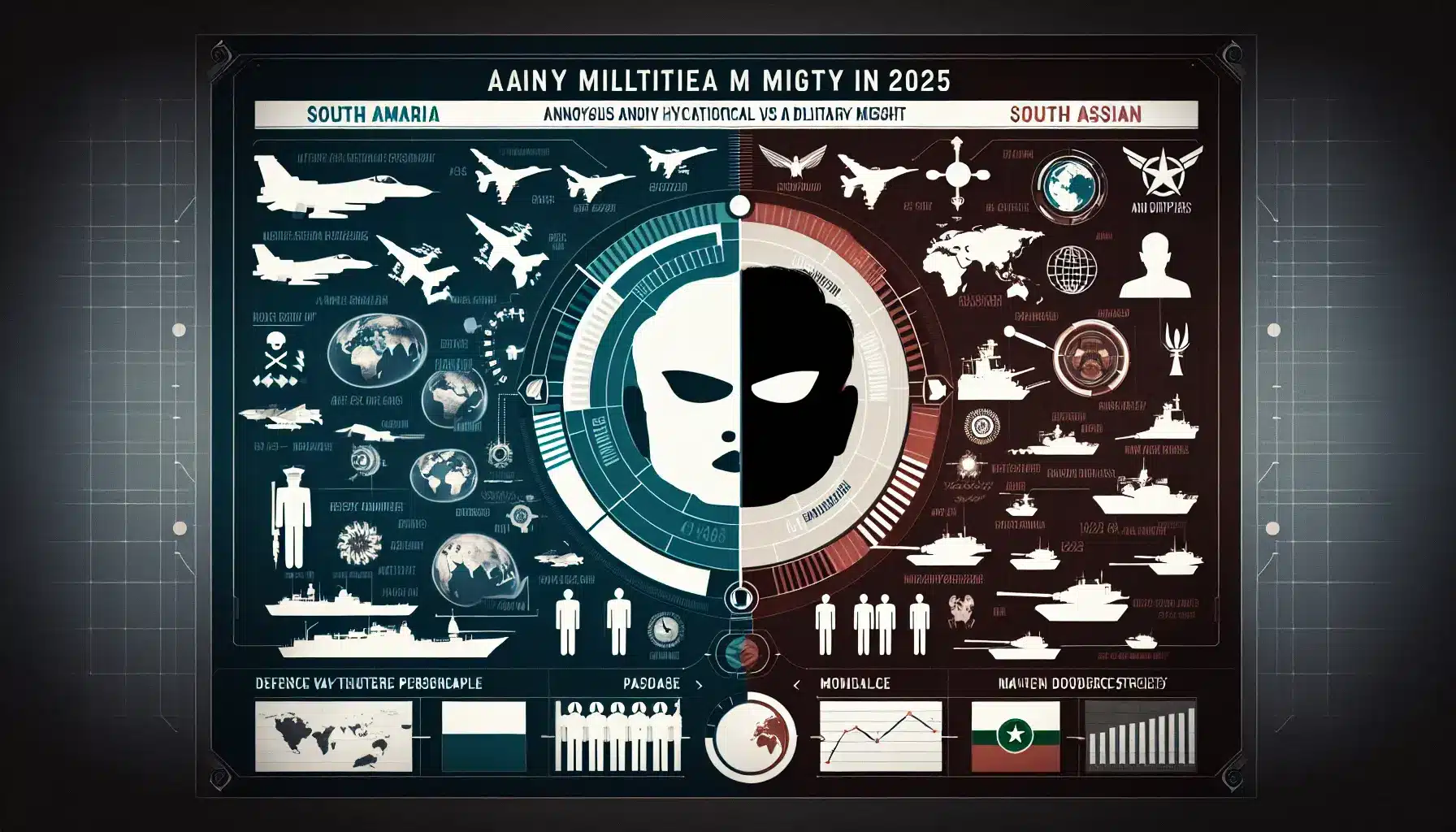
Estimated reading time: 10 minutes
Key Takeaways
- Military Imbalance: India holds a superior military position over Pakistan in terms of personnel and defense budget.
- Technological Advancements: The 2025 conflict introduced new warfare technologies, including drones and precision strikes.
- Historical Tensions: The Kashmir dispute continues to be a major point of contention with deep historical roots.
- International Influence: Global powers, especially the US, play a significant role in mediating peace efforts.
- Future Prospects: Continuous diplomatic efforts are vital for regional stability and preventing further escalations.
Table of Contents
- The Current State of Military Power: India and Pakistan
- Military Strength Comparison
- The 2025 Conflict: A New Chapter in Bilateral Relations
- Operation Sindoor and Its Aftermath
- Historical Context: The Legacy of Conflict
- Key Historical Conflicts
- Strategic Implications and Modern Warfare
- Current Challenges and Future Outlook
- International Implications
- Frequently Asked Questions
The Current State of Military Power: India and Pakistan
The military dynamics between India and Pakistan continue to shape South Asian geopolitics. In 2025, these nuclear-armed neighbors maintain significant military forces, though with notable disparities in capabilities and resources.
Military Strength Comparison
India has established itself as a dominant military force, ranking 4th globally according to the Global Firepower Index. Pakistan, while maintaining a formidable military presence, stands at 12th place. Let’s break down the key differences:
- **Personnel:** India commands 1.46 million active troops, while Pakistan maintains 660,000
- **Defense Budget:** India’s $81 billion budget significantly outweighs Pakistan’s $10 billion
- **Equipment:** India operates 2,229 aircraft, 4,201 tanks, and 293 naval vessels, including two aircraft carriers. Pakistan’s arsenal includes 1,399 aircraft, 2,627 tanks, and 121 naval vessels
The 2025 Conflict: A New Chapter in Bilateral Relations
May 2025 marked a significant escalation between the two nations, introducing modern warfare elements to this historical rivalry. The conflict began following a terrorist attack in Indian-administered Kashmir on April 22, 2025, resulting in 26 civilian casualties.
Operation Sindoor and Its Aftermath
India’s response, dubbed Operation Sindoor, initiated on May 7th with targeted missile strikes against militant infrastructure in Pakistan and Pakistan-administered Kashmir. The operation marked several significant developments:
- First major deployment of drone warfare between the two nations
- Precision strikes targeting militant infrastructure
- Four days of active hostilities before ceasefire implementation
Historical Context: The Legacy of Conflict
The India-Pakistan rivalry stems from the 1947 partition, leading to several major conflicts. India vs Pakistan: Key Conflicts, Historical Rivalry, and Prospects for Peace
Key Historical Conflicts
- 1965 War: Initiated by Pakistan’s Operation Gibraltar in Kashmir
- 1971 War: Resulted in Bangladesh’s creation and Pakistan’s significant military losses
- Ongoing Kashmir Dispute: Continues to fuel tensions and periodic skirmishes
Strategic Implications and Modern Warfare
The 2025 conflict highlighted several crucial developments in India-Pakistan relations:
- Nuclear Deterrence: Both nations’ nuclear capabilities limit conventional warfare scope
- Technological Evolution: Increased use of drones and precision strikes
- International Diplomacy: Active US involvement in ceasefire negotiations
Current Challenges and Future Outlook
Several persistent issues continue to influence bilateral relations:
Kashmir Dispute
The territorial conflict remains unresolved, with both nations maintaining their claims and occasional ceasefire violations occurring.
Economic Disparities
India’s stronger economic position enables greater military investment, while Pakistan faces economic constraints affecting its defense capabilities.
Terrorism Concerns
Cross-border terrorism allegations continue to strain diplomatic relations, with India maintaining its stance against Pakistan-based militant groups.
International Implications
The India-Pakistan dynamic affects global security considerations:
- **Regional Stability:** Their relationship significantly impacts South Asian peace
- **Global Security:** Nuclear capabilities make any conflict a matter of international concern
- **Economic Impact:** Military tensions affect regional trade and development
The military balance between India and Pakistan continues to evolve, with India maintaining overall superiority while Pakistan remains a significant regional force. The 2025 conflict demonstrated both the potential for rapid escalation and the effectiveness of international diplomatic intervention. As both nations continue to modernize their military capabilities, maintaining peace requires ongoing diplomatic engagement and conflict prevention measures.
Sources: Vajiram and Ravi, Wikipedia: Indo-Pakistani Wars, Wikipedia: 2025 India-Pakistan Conflict
Frequently Asked Questions
How does the military power of India compare to that of Pakistan?
India holds a stronger military position with more personnel, a larger defense budget, and superior equipment compared to Pakistan.
What were the key developments in the 2025 conflict?
The conflict saw the introduction of modern warfare techniques, including drone warfare and precision strikes, indicating a shift in military tactics.
Why is the Kashmir issue central to India-Pakistan relations?
The Kashmir issue is a longstanding territorial dispute rooted in historical conflict, continuing to fuel tensions between the two nations.
What role do global powers play in India-Pakistan conflicts?
Global powers, particularly the US, often intervene diplomatically to de-escalate tensions and facilitate ceasefire agreements.
What are the international implications of an India-Pakistan conflict?
Given their nuclear capabilities, any conflict between India and Pakistan carries significant implications for global security and regional economic stability.



